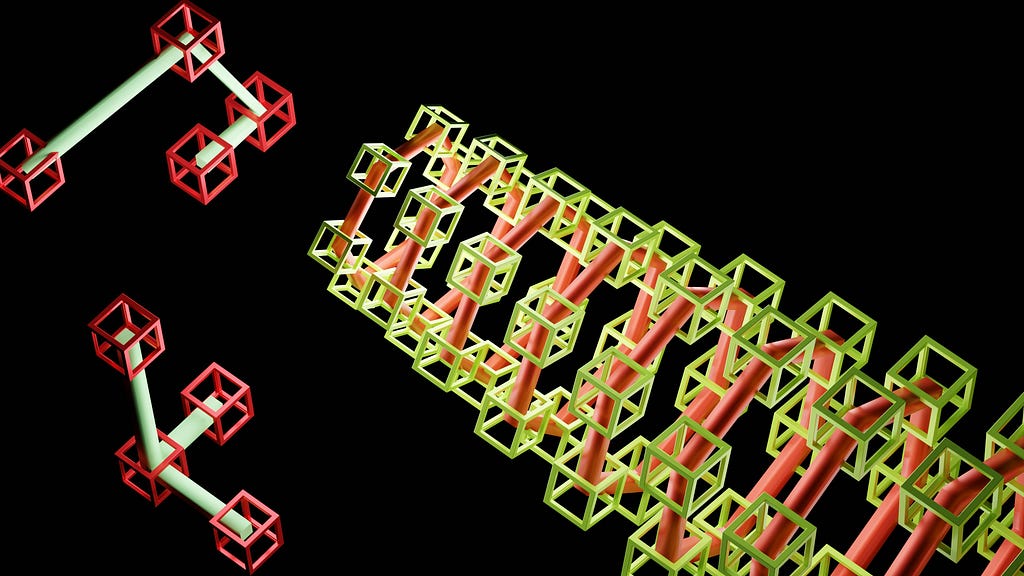Why Is Staking Such a Black Box?
Most people think Web3 is all about cryptocurrencies, airdrops, and speculation. Those activities always dominate the conversation because they’re the most common and the simplest entry points into Web3.
 Photo by Max Harlynking on Unsplash
Photo by Max Harlynking on UnsplashBut Web3 is so much more than that. It’s an upgrade of the internet into a decentralized and user-owned version. Its complexity however is a huge hindrance to mass adoption. Simplified user experience (UX) is a weapon to stand out and drive real adoption. Why do I think simplicity matters, and how can it help to spread Web3 gospel faster? Read on.
Why Web3 Is Misunderstood Photo by Growtika on Unsplash
Photo by Growtika on UnsplashWeb3 is about reimagining the internet. It is an internet on blockchain, decentralized protocols, and smart contracts that gives users ownership, privacy, and control. But for most people, Web3 is just about crypto trading or chasing airdrops. Those are the low hanging fruits that overshadow the broader vision.
Buying crypto or claiming an airdrop requires minimal technical know how. You download a wallet, yap on X, tap and maintain streaks on apps, or join a Discord server for free tokens. Compare that to using a bridging app or understanding a DAO’s governance model.
Another thing is hype and speculation. The crypto boom of 2020–2021, when cryptocurrencies hit all-time highs and NFTs sold for millions, made speculation the face of Web3. Mainstream media amplifies this, everyone ignores the less flashy use cases. People barely want to know about decentralized storage or self-sovereign identity.
Web3’s deeper applications require some learning curve that’s intimidating to most people, so they stick to what’s familiar (buying, selling, and hodling).
Simplicity is the solution Photo by Mae Mu on Unsplash
Photo by Mae Mu on UnsplashIf Web3 is going to move beyond niche communities of crypto bros and blockchain enthusiasts, it needs to be as intuitive as Web2 platforms. This is about removing friction so users can focus on the value, not the tech.
Take example of the most successful tech products: Google’s clean search bar, Facebook and X’s intuitivity, Cash App’s simple money transfers, PayPal's wallet, interbank transfers that doesn't require users to convert bank A's dollar to bank B's dollar before sending to bank B. They hide complexity behind a seamless UX. Web3 needs the same.
 Photo by appshunter.io on Unsplash
Photo by appshunter.io on UnsplashLet's learn from tech giants. PayPal made online payments accessible to everyone, not just tech nerds. No one needs to understand payment gateway codes to send money.
Web3 needs its PayPal moment. It needs interfaces that let users interact with dApps or DeFi without needing to understand bridging or Layer 0. Microsoft simplified computing with Windows and made it intuitive for non-coders. Web3 should prioritize user-friendly designs over technical complexity.
Using a dApp today involves too many steps: installing MetaMask, buying ETH for gas fees, bridging tokens across chains, and praying you don’t lose your private key. Compare that to signing into Instagram with an email. Simplified onboarding will bring millions into Web3.
Creators would like to monetize their art directly via NFT marketplaces, freelancers would like to get paid on decentralized platforms instead of PayPal. These use cases exist but are buried under clunky interfaces.
I know a startup that's letting freelancers in Nigeria get paid more easily than ever. USDC is part of their system that's making payments easier and faster. Blockroll is a Web2 Fintech using Web3 resources. I can boldly tell you that such a platform will have more happy users than Metamask, until Metamask starts feeling like a Web2 app.
Simplified UX Gives Builders a Competitive Edge
If you’re a Web3 builder, your competition isn’t just other dApps, it’s Web2 giants with polished UX that users already love.
 Photo by Annie Spratt on Unsplash
Photo by Annie Spratt on UnsplashMost people won’t jump through hoops to use your product. A simplified UX lowers the barrier and attracts non-technical users who want Web3’s benefits without the usual struggle. OpenSea grew because their NFT marketplaces were more user-friendly than early competitors.
 Photo by Dylan Clifton on Unsplash
Photo by Dylan Clifton on UnsplashThe only set of people that are ready to use Web3 today are the people who already understand the technicalities, some privacy advocates, most of them have been on crypto for a decade at least. The others are the speculative users who are getting paid to do it, they won't use your app unless you're doing an airdrop.
Focus on retention over hype because speculative users chasing airdrops will bounce the moment the market dips. But users who find real value stick around. You can't have users' loyalty without a great UX.
Many Web3 projects prioritize tech over UX, assuming users will tolerate complexity for decentralization’s sake. They’re wrong. A 2023 study by ConsenSys found that 83% of potential Web3 users abandoned dApps due to poor UX. You can stay ahead of 90% of your niche if you can simplify your UX to Web2 level.
 Photo by Mika Baumeister on Unsplash
Photo by Mika Baumeister on UnsplashHide blockchain’s complexity. We need wallets that feel like PayPal, platforms that handle gas fees behind the screen. Offer fiat on-ramps, we need decentralized social logins, or seedless wallets to reduce setup friction. Design for what users want, not the underlying tech.
All these issues of connecting wallets every now and then have to stop. Something needs to be done. If joining a dApp isn't as simple as signing in with Gmail then it's not simple enough.
Simplicity Is a Superpower that's giving Web2 advantage over Web3 currently. From my point of view, Web3’s promise won’t mean much if only crypto insiders can access it. The crypto, airdrop, and speculation craze is just the tip of the iceberg, but it’s drowning out Web3’s deeper potential. Simplifying UX will help amplify Web3's core values for the masses.
 Photo by Louis Hansel on Unsplash
Photo by Louis Hansel on UnsplashIn a few years, the projects that win won’t be the most technically complex, they’ll be the ones that make Web3 feel like second nature.
Look at AI in Web2, apart from those building them, nobody cares how the API works or what it even means. Nobody wants to know what machine learning or database is, they don't want to know how GPU clusters contribute to the system, they just want it to answer questions like their personal professor, and it does.
In the next five years, using a Web3 wallet will be nothing like we have today, and the task is on you the builders. Everytime you make an effort to simplify your UX, remember it's not just a product, you’re building the future of the internet.
And as a fuel to your simple UX effort, when you're on your desk, or in a meeting, always remember the Web2 giant that's already centralized the niche you're decentralizing.
Why Simplified UX Will Drive Web3's Mass Adoption was originally published in Coinmonks on Medium, where people are continuing the conversation by highlighting and responding to this story.
